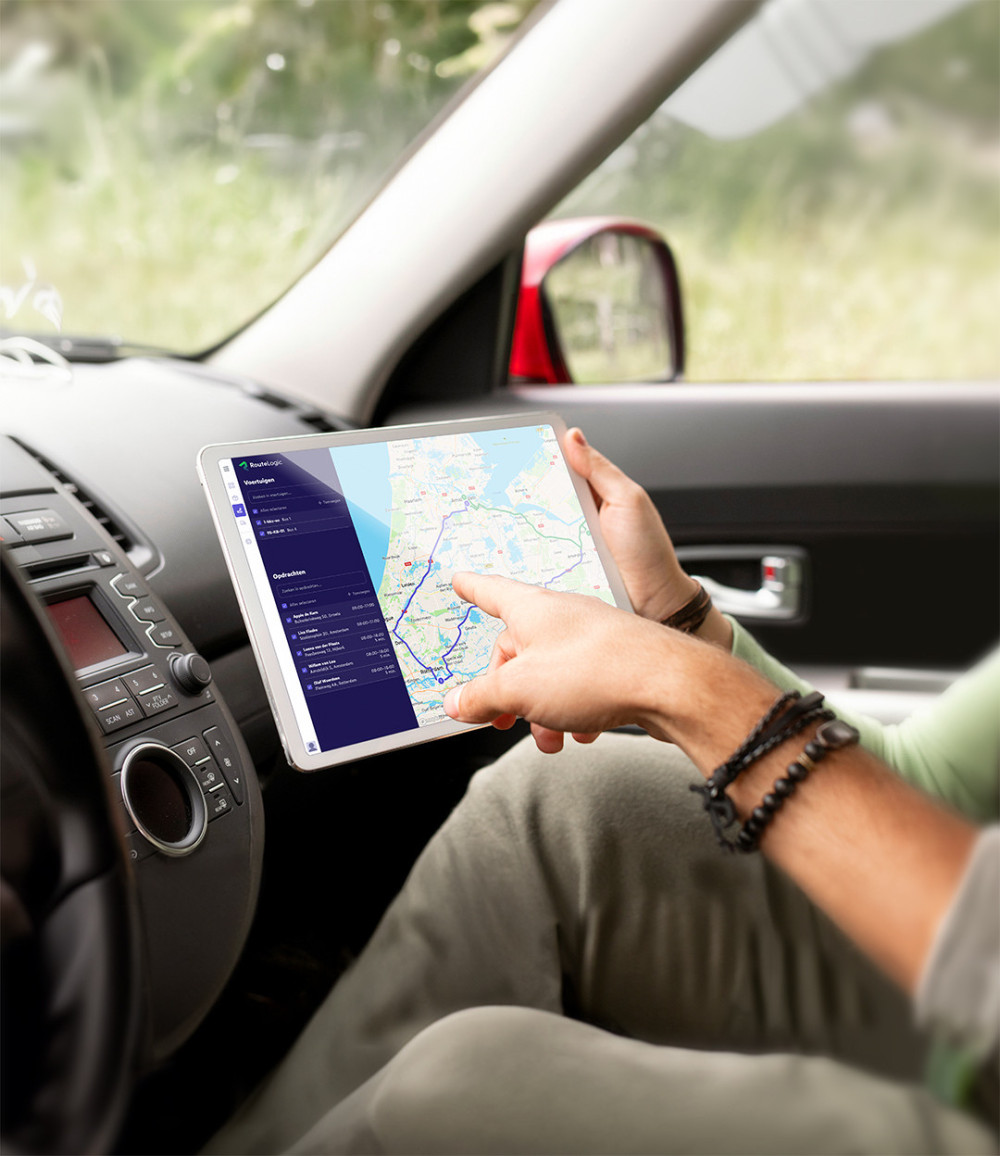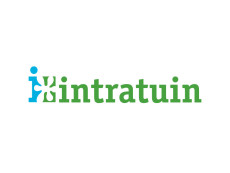What is TMS software (transport management system)
A transport management system (TMS) is a software solution that helps companies optimise the transport process by identifying inefficiencies and providing solutions to solve these problems. A transport management system enables companies to work more efficiently and save costs on their logistics operations. A TMS provides functions such as route planning, tracking and tracing, invoicing, order processing and cost analysis. Transport management systems are mainly used by transport companies.

Hoe werkt een transport management systeem?
A transportation management system (TMS) is a software solution used to efficiently manage transportation operations. It can lead to cost savings, improved customer service and increased profitability. To understand how a TMS works, it is important to know some of the core functions of the system.
A TMS integrates with other business software, such as ERP (Enterprise Resource Planning) and WMS (Warehouse Management System), to exchange real-time data and provide accurate information for transportation decisions. This seamless integration provides a holistic view of the entire supply chain and helps make data-driven decisions. Route planning and freight optimization are essential functions of a TMS. A very limited number of transportation management systems use sophisticated algorithms to calculate the most efficient routes, taking into account factors such as distance, traffic, fuel costs and delivery times.
What are the benefits of a TMS?
A TMS offers numerous benefits to companies operating in the transportation and logistics sector. Some benefits include: cost savings through more efficient route planning and freight optimization, improved supply chain visibility, time savings through process automation, improved customer service through accurate track and trace, and easier regulatory compliance and reporting.

What are the main functionalities of a TMS?
A transportation management system (TMS) offers a range of functionalities that can optimize your logistics and transportation operations. Here are some of the key features you can expect to find in a transportation system:
- Route planning and optimization: Using a TMS, (transport) routes can be planned based on various criteria, such as distance, time, transport mode and cost. This can help find the most efficient route and minimize transportation costs.
- Order management: A TMS can manage transportation orders, including creating, editing and canceling orders. This includes capturing information such as loading and unloading addresses, transportation mode, shipment weight and volume, and any special requirements. In addition, a TMS also provides real-time visibility of your shipments, so you can track the status of your deliveries and address any delays.
- Billing: A transportation management system can also support billing by capturing transportation costs and automatically generating invoices.
- Performance analysis and reporting: Using a TMS, you can analyze key performance indicators (KPIs), identify trends and make data-driven decisions to further improve your logistics processes.

Why is it important to implement a transportation management system?
Implementing a TMS is important because it helps streamline and optimize transportation processes in your organization. It increases transportation efficiency, reduces costs and improves customer satisfaction. With a transportation management system, carriers, drivers and delivery vans can plan and allocate better, so that routes are optimally planned and empty miles are reduced. In this way, you not only save time and money, but also reduce CO2 emissions and do your part to reduce CO2 emissions.
In addition, a TMS also helps in tracking vital data such as delivery status, location of cargo and transportation costs. This helps in making crucial decisions and optimizing business processes. In summary, implementing a transportation management system can lead to improved efficiency, cost savings, customer satisfaction and optimization of business processes.
How to choose the best transport management system for my company?
Choosing the best transport management software for your company is important, but how do you make the right choice? While this naturally varies from company to company, these 4 steps are good to go through.
-
Make a list of features, taking into account the size of your company, the type of transport, the complexity of your operations, and the budget. Determine which features are essential and which features would be nice to have.
-
Research suppliers: Look for reputable TMS suppliers and compare offerings. Consider factors such as ease of use, scalability, and customer support.
-
Sign up for a trial account or request demos: Test different systems to assess if they meet your expectations. Pay attention to user-friendliness, the experience for your planners, drivers, and your own customers (what they see and if it appears professional).
-
Read customer reviews: Check reviews and experiences from other users to gain insight into the reliability and effectiveness of the system.
By following these steps, you can make an informed decision and choose the right software.
How do I integrate a TMS into my business processes?
Integrating a transport management system (TMS) into your business process is essential to maximize efficiency and cost savings. Follow these steps for a smooth TMS implementation:
-
Analyze your current processes: Map out your current logistics and transport processes to understand where improvements are possible and how a TMS can contribute.
-
Choose the right TMS: Select a transport management system that fits your company size, needs, and budget, and provides the desired features and integrations.
-
Plan the implementation: Collaborate closely with your TMS supplier to create a detailed implementation plan, including timelines, responsibilities, and milestones.
-
Training and support: Ensure that all involved employees are trained in using the TMS and that sufficient support is available for a successful transition.
-
Continuous optimization: Regularly evaluate the performance of your TMS and adjust the system to achieve maximum efficiency and effectiveness.
By following these steps, you can seamlessly integrate a TMS into your business processes. If you have no experience with it, consider hiring someone who has selected and implemented a TMS before. This may cost a bit upfront but will save you a lot of delays and additional costs.
What are the costs of a TMS?
Generally, there are two main costs to consider: license fees and subscription fees. License fees involve a one-time payment for using the software, while subscription fees require monthly or annual payments. The initial costs for a TMS can range from a few thousand euros for simple systems to hundreds of thousands of euros for advanced solutions. Subscription fees often start around €100 per month and can go up to €1000 or more, depending on complexity and the number of users.

Do I need a TMS or is there other software that can help me?
Transport Management Systems come in many colours and flavours. Most of the software packages available on the market are not really user-friendly. To understand the software, you often need a course. Also, extensive manuals are often made available and this should already ring a small alarm bell with you. If the software is so difficult to use that it even requires a manual to be written, you have to wonder whether you should even start doing that.
Most transport management systems are very comprehensive and many of the functionalities you do not need in most cases. What transport management systems often lack is good route optimisation. The ability to distribute all your orders across your entire fleet and calculate the most optimal route for it is often missing. In addition, transport management systems are not good at giving your customers the ultimate customer experience. There is no track and trace page or it does not match your house style and the experience you like to offer your customers. Also, informing your customers by e-mail and SMS with accurate arrival times (ETAs) is often not possible.
These companies use RouteLogic's TMS

Trip planning and route planning with a TMS
One of the logistics processes involves planning routes for drivers. Day in, day out, drivers drive multiple routes to deliver orders. Planning these routes manually costs a lot of time and money. Route planning software determines the most efficient routes for multiple vehicles and addresses. Automating route planning solves several problems:
- Automatic route planning saves more time;
- Routes become more efficient by using a sophisticated and good algorithm;
- Fuel savings through efficient routes;
- Planners have real-time insight into the location of drivers.

Benefits of route planning with a transport management system
With RouteLogic's software, you efficiently plan routes for multiple addresses and multiple vehicles. RouteLogic has many advantages as a transport management system. RouteLogic's route planning software takes into account the capacity of the vehicles. So you can be sure that a route not only fits into the available time but also into the vehicle. Period delivery is a handy feature that allows you to give your customers a choice of having the order delivered in a period of time. The route calculation then takes this into account. Almost arrived at the address in question? Then send a track & trace code via SMS or e-mail so your customer knows exactly when the order will be delivered.

Mobile driver app
| Feature | Other transport management systems | RouteLogic |
|---|---|---|
| Sending invoices | sometimes | Niet ondersteund |
| Route optimisation | Niet ondersteund | Ondersteund |
| Graphical planning with map | Niet ondersteund | Ondersteund |
| Automatically distribute jobs to as few vehicles as possible | Niet ondersteund | Ondersteund |
| Track and trace page in house style | Niet ondersteund | Ondersteund |
| SMS/email notifications with your own text | Niet ondersteund | Ondersteund |
Calculate how much you will save with RouteLogic
Extra advantages the reduction in your co2 emissions, the increased delivery experience with your customers and the reduced workload for your drivers.



